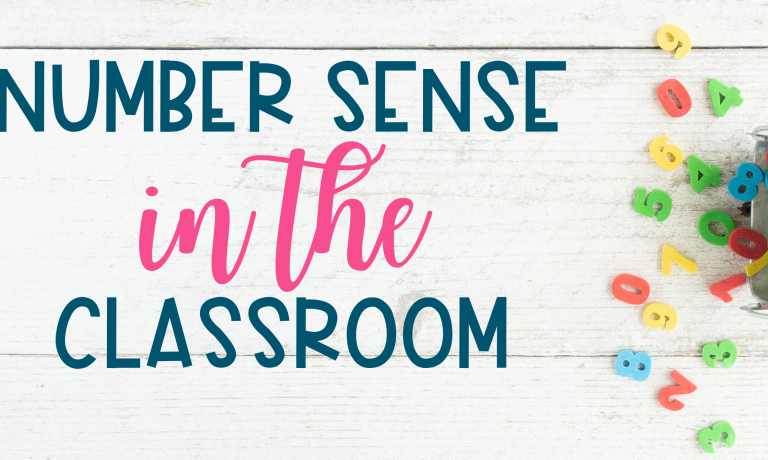Number sense is a huge part of education from Kindergarten until adulthood. We use numbers everyday and if we don’t have the foundational number sense skills, we won’t be able to have the knowledge to be successful later in life.
What is Number Sense?
Number sense is a child’s set of skills when working with numbers. More importantly, number sense is one’s ability to see the flexibility in numbers. Children with number sense understand quantities, grasp basic concepts, and understand key operations and symbols. But this all leads to the bigger picture of what we really want for our students. A child with a strong foundation and number sense is fact fluid and can identify multiple ways to solve problems.
In my quest to establish opportunities to build number sense in my classroom, I realized I needed to modify my definition of fluency. In the past, I saw fact fluency only in time meant measurement. I wanted my students to regurgitate answers in warp speed. But this way of thinking didn’t support number sense. In my classroom, I’m all about conceptual understanding, seeing beyond steps and algorithms.
So why was I teaching fluency in such a rigid way?
Math celebrates diversity and creativity and solving problems and I wanted to see that fluency in that same light. So I started to reevaluate my perspective on fluency.
How do I define fluency?
Fluency is broken down into three parts:
Accuracy
This is the easiest category to digest. You’re simply evaluating if the answer is correct or incorrect.
Efficiency
How comfortable are your students with manipulating equations and numbers? If they’re confident in their skills, they still should be able to produce an answer in a sufficient amount of time. We should strive for our students to use automaticity over memorization of facts, so what’s the difference?
Memorization
Students will pull math facts from recall with no thinking needed or connections made. Speed is quick and the main focus.
Automaticity
This is the ability to produce an answer with an adequate speed. But making connections is the main focus.
Flexibility
With flexibility, you’re allowing students and in fact encouraging them to explore various ways to arrive at one answer. This doesn’t mean allowing students to spend lengthy amounts of time.
How to Promote Number Sense
Modeling
At the beginning of the year, especially, I spend time on how to mentally execute number sense strategies, what they look like, what they are, and how to apply them to specific numeric scenarios. I have these posters hanging in my classroom all year as a reference for students. With time, you’ll see students refer to these posters less and less, their confidence builds and they become more fluid with mental math.
Designate Practice Time
This sort of thinking and mental math may come easy to some students while taking a while for others. They need practice in order to get better. I conduct number talks in my classroom. Number talks should last five to seven minutes and includes student discussion and pure collaboration. With this repetition and practice, students will begin to see how the manipulation of numbers is a strategy that can be used daily, both inside and outside of the classroom.
Asking the right kind of questions is going to help you promote number sense or build your students’ number sense abilities. And the amount of questions that you ask is also a factor too. Asking questions such as does this mathematically make sense? And what does this look like in visual form will force your students to justify their answers and use multiple strategies? Never accept only one way of solving a problem? Encourage students to share their methods and celebrate the diversity of strategies.
